Featured Articles
Avila's TSS Pound for Pound List
 Floyd “Money” Mayweather continues to rule the world of prizefighting as the recognized best boxer pound for pound in the world.
Floyd “Money” Mayweather continues to rule the world of prizefighting as the recognized best boxer pound for pound in the world.
The Las Vegas boxer may only fight two or three times a year but when Mayweather steps into the boxing ring all eyes are focused on his world. Whether it’s boxing related or not, even the casual and non-boxing fan knows what the welterweight world champion is doing.
Can anybody beat Mayweather?
At least a couple other prizefighters are listed below that have a shot at dethroning Mayweather. One or two have an opportunity to actually face him and some others have a long shot opportunity. But can they do the job?
This pound for pound list is built on steady achievement. There is no hopscotching over another fighter simply because he knocked out an opponent spectacularly. Popularity doesn't play a role on this list either. It has to be earned by beating another pound for pound fighter or by domination of one or two weight classes at least. Some have dominated multiple weight classes and that is a big reason they are on this list.
A fighter begins near the bottom of the list and moves up by beating a fellow pound for pound fighter or by winning against top competition. Sometimes the competition may not be well known but that happens in the world of boxing. Television influences a lot of readers and a fighter's recognition factor is often based on television exposure. I'm not concerned with television exposure, only who a fighter beats in head to head competition.
Here's the list:
1. Floyd Mayweather (43-0, 26 KOs) – Now 35, Mayweather put on a spectacular performance with his win over Puerto Rico's Miguel Cotto last May in Las Vegas. That fight showed that despite age creeping into his body, those skills pay the bills. A few fighters below could give Mayweather a very competitive fight. We'll see what happens in 2013.
2. Juan Manuel Marquez (54-6-1, 39 KOs) – Few have remained on a pound for pound list like the 39-year-old Mexico City warrior Marquez. In his nearly 20-year career one can proclaim that he's only been beaten once in the boxing ring and that came against Mayweather back in 2009. He's set to face Manny Pacquiao once again. More than a few are predicting a clear cut victory this time.
3. Timothy Bradley (29-0, 12 KOs) – After dethroning Manny Pacquiao by decision last June it was assumed a rematch would take place to quiet the doubters. It didn't happen. Bradley's promoter decided to go another direction and that has left hard core boxing fans upset. The “Desert Storm” has to wait for another moment but he does have the qualities to step in the ring with the best of the best and emerge victorious. He's been doing it his entire career. Can he beat Mayweather, Marquez or Brandon Rios? We’d love to see those fights happen.
4. Manny Pacquiao (54-4-2, 38 KOs) – The Filipino hurricane finally showed signs of slowing this past summer when he lost to Tim Bradley by decision. For the first time the turbo charged prizefighter seemed to be running on only four pistons instead of eight. For most of the fight against Bradley he put his foot on the pedal in the last minute of every round. That's not the usual Pacman style. At his best he was a fighting machine that never stopped. All you had to do was point him in the right direction and he would dominate. Are those days over? We’ll find out in December.
5. Sergio Martinez (50-2-2, 28 KOs) – For 11 rounds the speedy left-handed Martinez showed off his impressive skills against Julio Cesar Chavez Jr. this past September. Then came round 12 and the Argentine was caught by a right hand and some other bombs from the kid. Martinez survived only because of his remarkable stamina and hard work done in weeks of training before the fight. At age 37, there are only so many fights left in his career. Hopefully a match with Mayweather can be made. Maybe even Peter “Kid Chocolate” Quillin.
6. Robert “The Ghost” Guerrero (30-1-1, 18 KOs) – The Gilroy prizefighter has been on this list for several years. Now that he fights at welterweight he finally might be getting more notice. Guerrero, 29, is set to fight Andre Berto next month at the Citizens Business Bank Arena in Ontario, California. The southpaw is a remarkable athlete whose talent has not been shown off to the boxing public. A win over the much feared Selcuk Aydin was noticed by real boxing experts. But the regular fight fan didn't understand the impressiveness of the win. Guerrero can be thrown in against any of the elite welterweights and win.
7. Nonito “Filipino Flash” Donaire (30-1, 19 KOs) – Just a few weeks ago Donaire was expected to hit the glass ceiling against Japan's Toshiaki Nishioka in a fight between rival titleholders in the junior featherweight division. Instead, Donaire blitzed the southpaw with his blend of speed and power and never allowed the Japanese fighter to mount an attack. It was impressive. Thankfully, there are a number of fighters in the division that Donaire can fight like Abner Mares or Guillermo Rigondeaux..
8. Andre Ward (26-0, 14 KOs) – Oakland's Ward has virtually cleaned out the loaded super middleweight division. Next, the light heavyweight division awaits the 28-year-old prizefighter whose dominating knockout win over Chad Dawson was his welcoming to the world of 175-pounders. Although the fight against Dawson was held at 168-pounds, few doubt that Ward will be stopped by any light heavyweight in the immediate future. Bring them on.
9. Wladimir Klitschko (58-3, 50 KOs) – Ukraine's Klitschko has steadily improved over the years and surpassed his older brother as the best Klitschko. However, fighting primarily in Europe against unknown heavyweights has hurt the heavyweight dominator. A win over Tony Thompson did him no good. His opposition has been weak throughout his latter career. He needs a good heavyweight challenge to finally make his mark. Who will that be?
10. Roman “Chocolatito” Gonzalez (33-0, 28 KOs) – The junior flyweight bomber from Nicaragua has an exciting style. Gonzalez, 25, is slated to defend his world title on Nov. 17, against Juan Estrada at the Sports Arena in Los Angeles. Little Chocolate has tight boxing skills and when he connects there's little doubt he packs power. Fighters at this weight don't last very long on this list, but there are exceptions. We'll see if Gonzalez can be the next Ricardo “Finito” Lopez.
11. Danny “Swift” Garcia (25-0, 16 KOs) – The Philadelphia junior welterweight is only 24 years old and a member of this list. Emphatic wins over Kendall Holt and Nate Campbell were good, but knockouts of Amir Khan and Erik Morales guaranteed him a spot on this register of the best fighters on the planet. He still needs work but what he possesses already is quite a bit. He can plain scrap and box with the best boxers today. I wonder how much better Garcia will be in three years?
12. Vitali Klitschko (45-2, 41 KOs) – The elder Klitschko is slowing down and told insiders the end is near. Unimpressive fights against Manuel Charr and Dereck Chisora were chosen over a match with James “Lights Out” Toney. Both Klitschko brothers have ducked Toney for more than a decade. That’s a long time. Now that Vitali is 41 and Toney is 44, why not fight each other. It can’t be because of age.
Honorable Mention:
Abner Mares, Brandon Rios, Gennady Golovkin, Saul Alvarez, Amir Khan, Miguel Cotto, Carl Froch, Leo Santa Cruz, Chad Dawson, Adrien Broner
-
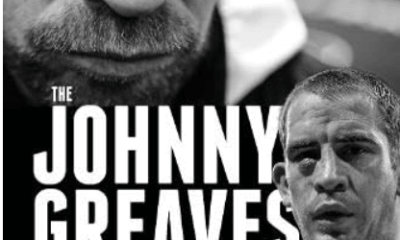
 Featured Articles3 weeks ago
Featured Articles3 weeks agoThomas Hauser’s Literary Notes: Johnny Greaves Tells a Sad Tale
-
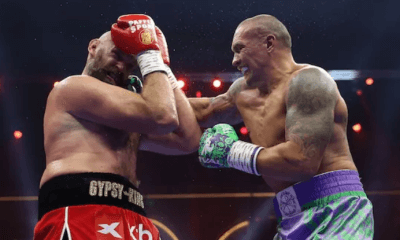
 Featured Articles2 weeks ago
Featured Articles2 weeks agoBoxing Notes and Nuggets from Thomas Hauser
-
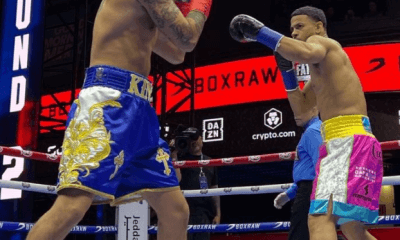
 Featured Articles4 weeks ago
Featured Articles4 weeks agoRolly Romero Upsets Ryan Garcia in the Finale of a Times Square Tripleheader
-
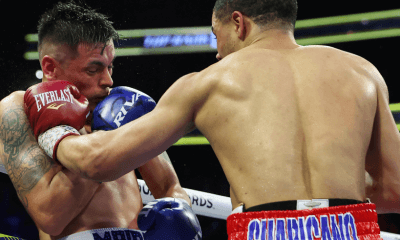
 Featured Articles4 weeks ago
Featured Articles4 weeks agoUndercard Results and Recaps from the Inoue-Cardenas Show in Las Vegas
-
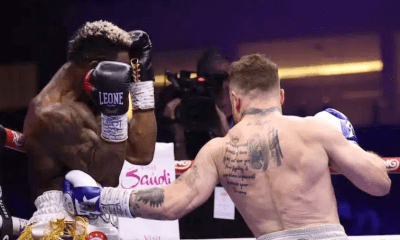
 Featured Articles4 weeks ago
Featured Articles4 weeks agoCanelo Alvarez Upends Dancing Machine William Scull in Saudi Arabia
-
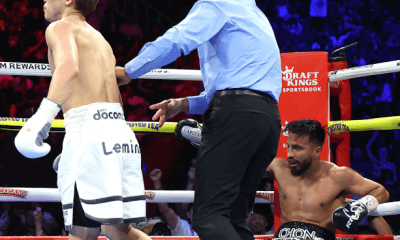
 Featured Articles4 weeks ago
Featured Articles4 weeks agoBombs Away in Las Vegas where Inoue and Espinoza Scored Smashing Triumphs
-
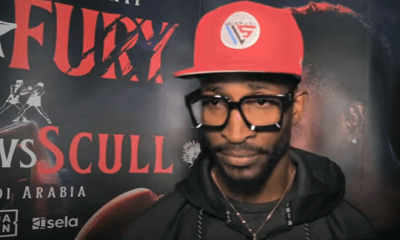
 Featured Articles4 weeks ago
Featured Articles4 weeks agoArne’s Almanac: The Good, the Bad, and the (Mostly) Ugly; a Weekend Boxing Recap and More
-
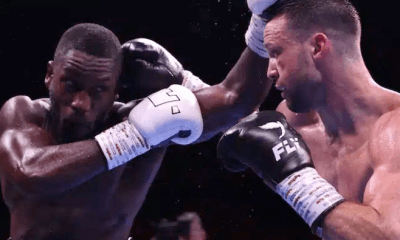
 Featured Articles1 week ago
Featured Articles1 week agoEkow Essuman Upsets Josh Taylor and Moses Itauma Blasts Out Mike Balogun in Glasgow



















